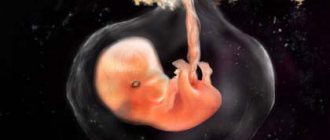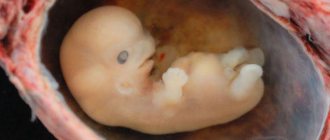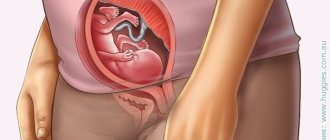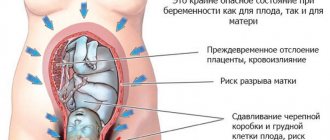Why does my stomach hurt at 10 weeks of pregnancy?
By week 10, the embryo begins to actively develop.
It is not large enough, so there is no pressure on the internal organs. A physiological reason appears when wearing uncomfortable clothes. Pants and skirt put pressure on the hip area, creating a negative feeling. At this time, deviations in the formation of internal organs in the fetus quickly form. Any damaging factor causes problems. A woman should not smoke, use illegal drugs, or drink alcohol.
With the development of a systemic bacterial or viral infection, contamination of intrauterine waters occurs. The condition creates painful symptoms in the form of a signal that alerts the patient and the doctor.
If the fetus is subjected to a strong negative influence, the pregnancy may stall. The embryo receives an insufficient amount of nutrients and oxygen, and is susceptible to toxic effects.
Therefore, his internal organs stop developing. In response to the freezing, the immune system releases antibodies, causing a miscarriage. This leads to acute pain that does not go away on its own.
If a pregnant woman experiences increased stress on the body, there is a negative effect on the ligaments around the uterus. This provokes nagging, aching pain that intensifies towards the end of the day. No treatment is required, but prolonged rest is indicated.
Changes in the baby at 10 weeks of pregnancy
Now is the time to compare the baby's size (3-4 cm) with some delicious fruit, for example, prunes or kumquats. The child’s clearly formed fingers begin to develop - tiny nails already appear on them. During the tenth week of pregnancy, the baby can bend his wrists, as well as his arms at the elbows.
All the child’s vital organs are already located in their proper places. They will continue to mature and develop throughout the remainder of the pregnancy in order to prepare to function properly and independently once the baby is born and leaves the uterus.
At the tenth week of pregnancy, the fetus has fully functional:
- lungs;
- liver;
- heart;
- kidneys
It is curious that it is the baby’s kidneys that not only filter the blood and produce urine, but also secrete digestive juices in the stomach, thus preparing it to work with amniotic fluid. In addition to internal organs, the child has fully developed eyes, ears, and facial bones. The head, under which the neck is already clearly formed, is still larger than the body. If this little man is to be born a boy, then at the 10th week of pregnancy his ovaries are already performing their function and producing testosterone, an important male sex hormone. Marvelous! Is not it?
What causes nagging, aching pain during pregnancy?
Changes in the female genitalia leading to discomfort:
- excessive uterine tone;
- genital infections with whitish or bloody vaginal discharge;
- polycystic ovary syndrome;
- endometriosis, other damage to the surface structure of the uterus.
There are systemic diseases that are dangerous to the condition of the fetus and cause similar symptoms:
- systemic viral and infectious diseases (ARVI, tonsillitis);
- Rh conflict associated with incompatibility of the Rh factor of the mother and embryo;
- inflammation of parts of the urinary system;
- intestinal dysfunction with the appearance of diarrhea, constipation;
- hormonal imbalance, especially during a decrease in hCG levels;
- damage to the hip joint, lower spine;
- allergic reaction, dermatitis, accompanied by rash, inflammation, swelling of the skin on the abdomen.
There are many reasons for painful symptoms. Conducts diagnostics, identifying the damaging factor. Biological fluids and purulent discharge are examined. An ultrasound is performed to examine the child's health.
Based on the results obtained, the diagnosis is determined and treatment is prescribed. It is strictly followed. If the disease is neglected, serious consequences will develop, the doctor will forbid giving birth naturally, and surgery will be required.
Deal with tone
Massage helps to relax the baby, which is especially important with increased muscle tone!
From birth, all babies have a so-called physiological tone and this is considered the norm until they reach three months! - because for 9 months the child was in a confined space and was not able to fully move!
After birth, muscle tone gradually returns to normal; by 10 weeks, the baby’s arms and legs are no longer bent so much and he is able to actively move them!
It is too early for Katrina’s parents to worry about the increased tone of their daughter’s muscles - however, it would be nice to master the basic principles and movements of massage, which we can subsequently repeat at home.
Massage and adherence to the principles of handling will help us in the future to avoid troubles associated with increased muscle tone, which, unfortunately, is often found in children today!
Treatment pool
A swimming pool is often recommended for pregnant women.
It has the following effects:
- strengthening and toning the muscular system;
- normalization of ligament function;
- improving systemic blood flow, strengthening blood vessels.
Before visiting the pool, people are tested for infections. This protects the patient from the possibility of infection through water. The liquid is constantly treated with bleach and other chemicals to prevent bacteria from concentrating in it. Therefore, they do not think about infection from other people.
Basic principles of nutrition at 10 weeks of pregnancy
Pregnancy 10 weeks
To ensure proper intrauterine development of the child, a pregnant woman needs proper and healthy nutrition. The mother's diet should include the necessary set of vitamins and microelements, the lack of which can have a detrimental effect on the health of her and the baby.
At 10 weeks of pregnancy, a woman needs to consume approximately 2,700 kilocalories per day, a period characterized by an increase in nutrient needs. However, this does not mean that you need to overeat and leave the table with a heaviness in your stomach.

Diet for pregnant women
The best option would be split meals - 5-6 times a day in small portions. Between meals, you can snack on dried fruits, which contain a large amount of useful substances. You can’t overeat at night; it’s best to have dinner 3 hours before bedtime. If you still feel hungry, you can drink a glass of kefir or eat an apple at night.
It is preferable to steam, stew or bake all food. A woman who is 10 weeks pregnant should avoid certain foods. The list of harmful foods includes fried and smoked foods, spicy and fatty foods. It is undesirable to consume marinades and sauces, which act as stomach irritants and cause heartburn. It is necessary to limit the amount of salt and sugar, replace white bread with products made from wholemeal flour.
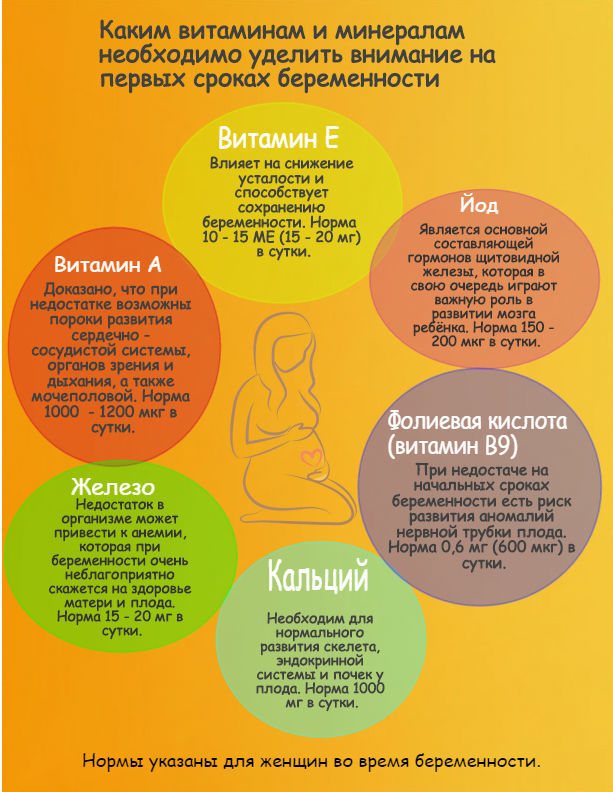
Vitamins in the first trimester of pregnancy
Sausages, canned food, fast food, carbonated drinks, coffee and products containing dyes and preservatives should not be included in a pregnant woman's diet. The same applies to any, even low-alcohol drinks. Do not eat raw or half-raw meat and fish. You should not take risks by including exotic fruits in the menu, and if you are prone to allergies, eat strawberries, citrus fruits, and chocolate.
It is very useful at this stage of pregnancy to include fermented milk products in your diet, which have a beneficial effect on improving the functioning of the gastrointestinal tract and solving the problems of constipation. Beets and prunes will have the same effect.
A pregnant woman's diet must include fresh vegetables and fruits, as much greens as possible: spinach, lettuce, parsley, dill. It is necessary to supplement the diet with boiled fish and lean meat, and whole grain cereals. Don't forget about liquids, drinking at least 8 glasses a day (including soup broths).
https://youtu.be/_2cgvywm_BI10
week of pregnancy
What does dull, pulling, point or cutting pain in the abdomen indicate?
Stomach pain during pregnancy is due to changes in the body, in organs associated with hormonal changes, changes in the position of internal organs, and obstetric pathologies.
Many types of these sensations do not pose a threat to the health of the mother or the condition of the fetus. Others cause significant harm and even death to the woman and the unborn child.
Pain is a reaction of the nervous system to stimuli. A symptom of many diseases, including obstetric pathologies during pregnancy. A pregnant woman experiences hormonal changes and a restructuring of many systems. They are also accompanied by this feeling.
If discomfort and pain occur, it is better to consult with your doctor about the nature of these sensations and appropriate treatment. During pregnancy, a woman is responsible not only for her own health, but also for the health of the baby.
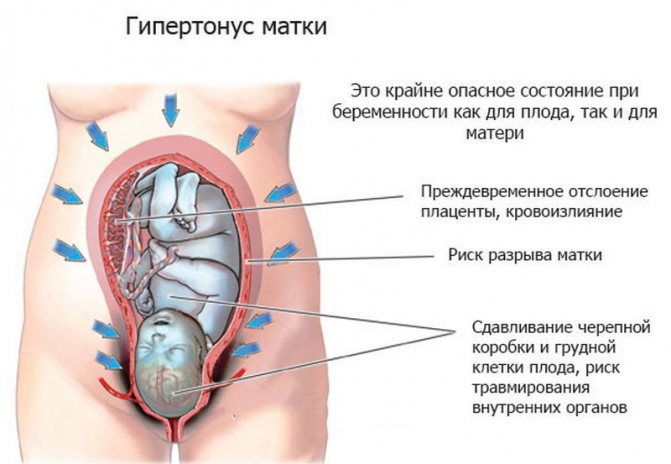
Nature has determined that the mother’s body tries to protect the fetus from all negative influences. A plug formed from mucus in the cervix prevents pathogenic microorganisms from entering.
Umbilical cord nutrition is formed in such a way that harmful chemical compounds do not enter the fetus. The uterus itself protects the child from external mechanical influence.
At the same time, during the period of bearing a baby, the woman herself may regularly experience pain of varying intensity and nature. Each type of discomfort indicates the presence of different pathological conditions, with the exception of harmless obstetric ones associated with changes in the maternal body and preparation for childbirth.
Based on the nature, intensity of pain, and gestational age, we can talk about how dangerous the condition is.
For example, pulling, extending to the lower back and groin, may indicate a risk of miscarriage. An additional sign of the condition will be the presence of bloody discharge.
In this case, you should immediately seek medical help and undergo an examination. If you delay visiting a doctor, the frequency of contractions will become more frequent and spontaneous miscarriage will occur.
Uterine tone is dangerous regardless of how early it was diagnosed. The fetus may experience a lack of oxygen and incoming nutrients. The woman feels a sharp pain like contractions. The solid state of the uterus and lower abdomen is recorded.
In case of injury, late toxicosis, or stress, placental abruption may occur. The condition is accompanied by acute pain in the lower abdomen. Often there is internal bleeding without external manifestations in the form of discharge. Urgent hospitalization and surgical intervention are required. Without help, death will occur.
Cramps accompanied by dizziness at five to twelve weeks can be a symptom of an ectopic pregnancy. For a number of reasons, the egg was unable to enter the uterus and became embedded in the fallopian tube.
As a result of the rapid growth rate of the fertilized egg, severe pain occurs. The woman is sent for an ultrasound examination. An operation to terminate the pregnancy is prescribed. Lack of medical care will result in death for the pregnant woman.
A number of non-gynecological problems also contribute to the occurrence of unpleasant sensations in the lower abdomen:
- Disruption of the gastrointestinal tract. Additional symptoms: bitterness in the mouth, tingling in the lower abdomen, heartburn.
- Inflammation of the bladder and urinary tract. Symptoms: discomfort and burning when urinating, increased frequency of the urge to urinate, increased body temperature.
- Seasonal colds. They are accompanied by headaches, nasopharyngeal congestion, aching bones, and fever.
- Inflammation of the appendix (appendicitis). An acute condition in which severe vomiting occurs, weakness, and a strong increase in temperature are detected. Surgery is used to remove the inflamed area. This procedure is safe for a pregnant woman. Abdominal laparotomy appendectomy is used if peritonitis is suspected and less invasive laparoscopy is used if there are no signs of peritonitis. A course of rehabilitation therapy is prescribed.
It is possible to diagnose the pathology based on additional symptoms. Treatment should be supervised by medical professionals. It is prohibited to take pharmaceutical drugs on your own. If you aggravate your own condition through inept actions, this will inevitably affect the child’s development.
What will an ultrasound show at 10 weeks of pregnancy?
Since during this period most organs have long begun to develop, the doctor may prescribe an ultrasound to check fetal growth and exclude congenital pathologies. As a rule, the woman is asked to come to the examination with a full bladder to facilitate the ultrasound examination. After connecting the sensitive device, you can see on the monitor screen:
- the baby's head, which is almost twice the size of the body;
- spinal structure and more elongated spinal nerves;
- small hairs (lanugo) covering the baby's body;
- the functioning of internal organs, since the skin of the fetus is still transparent;
- the work of the heart, which ensures the movement of blood throughout the body.
Ultrasound can easily detect the pulse. Usually the tenth week of pregnancy is exactly the time when parents hear the baby’s heartbeat for the first time. The recorded rhythm is often compared to the sound of galloping horses. A normal heart rate is considered to be between 170-190 beats per minute.
When do you need to see a doctor urgently, and which doctor will help?
Cases of pain where medical intervention cannot be avoided:
- Cramping attacks of a pulling nature (especially in the first trimester of pregnancy) - you need to immediately seek help. There is a high risk of miscarriage or placental abruption. The presence of mucous discharge mixed with blood is a reason to call an ambulance for immediate hospitalization of the patient.
- Shingles with a return to the lower back in the presence of a burning sensation at the time of urination - signs of the development of pyelonephritis. Long-term treatment may be required. Signs of illness should be reported immediately.
- In the later stages, accompanied by contractions and increased uterine tone - a sign of premature birth.
Regardless of the stage of pregnancy, the appearance of bleeding from the vagina with or without pain - you should definitely call an ambulance.
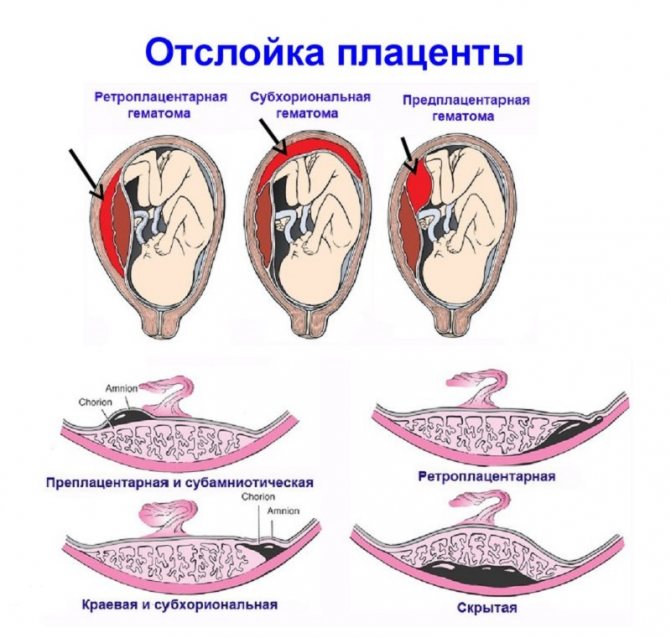
Consulting a pregnant woman and caring for the patient during pregnancy is the responsibility of the local obstetrician-gynecologist. They work in district antenatal clinics.
You can get an appointment with them in the following ways:
- through an electronic appointment system;
- by calling the registration number of the medical institution;
- Some consultations retained the journal recording system.
If the pain is not associated with the course of pregnancy and does not affect the development of the fetus, then you need to contact your local physician. It is important that treatment is selected taking into account saving the life and health of the mother and child.
The delights of intimate life at 10 weeks of pregnancy
In the absence of contraindications, sexual intimacy with a partner in the tenth week of pregnancy is simply necessary and beneficial for the expectant mother. Rest assured, your man will love the round belly of the woman he loves.
Sharply increased emotionality has a significant impact on the expectant mother. Since more blood now flows in the uterus and genitals, you will be able to experience orgasm more often, as well as experience more vivid sensations. But if sexual games begin to cause discomfort, then you should stop them, and then figure out the reason for such sensations. Maybe the pose is not suitable for you or your body requires rest (snack)?
Finding a suitable position is extremely important - this will help to avoid strong pressure on the stomach and very deep penetration. Although you should be careful now and know where to stop, sex during the tenth week of pregnancy promotes:
- pleasant physical and psycho-emotional release;
- bringing future parents closer to each other;
- distraction from poor health.
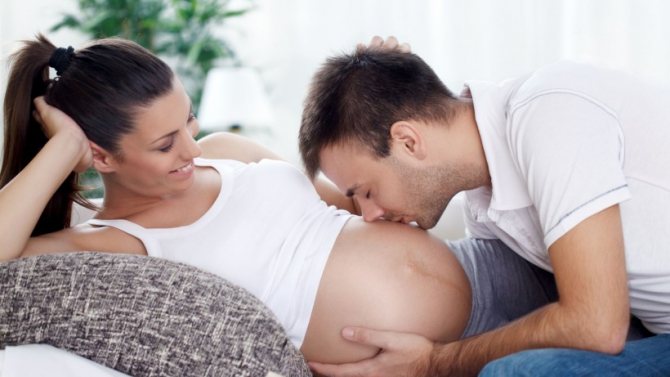
Top medications to reduce abdominal pain during pregnancy and breastfeeding, painkillers
Painkillers are not advisable during pregnancy. Especially in the first months, when the main formation of organs and tissues of the future person occurs. However, the process of experiencing discomfort caused by constant negative factors also does not bode well.
Before purchasing analgesics, consultation with a specialist is required. It is advisable to try non-pharmaceutical ways to cope with discomfort.
The least dangerous drug is Paracetamol. Suitable for use throughout the entire gestation period. Toxic components are in minimal concentration and are quickly excreted in the urine.
Ibuprofen is a non-steroidal anti-inflammatory drug. Prescribed with caution during the second trimester. Contraindicated for the first and third trimester. Use may cause a number of dangerous side effects. If your condition changes slightly for the worse while taking an analgesic, you should inform your doctor.
Indomethacin also belongs to the group of non-steroidal anti-inflammatory drugs. It is subject to the same restrictions as Ibuprofen. If taken continuously, there is a risk of damage to the child's kidney function.
For the first two trimesters, it is permissible to use creams and ointments based on:
- Diclofenac.
- Ketoprofen.
- Ketorolac.
In the third trimester, you can only use local products based on herbal ingredients. It is forbidden to apply them if they contain bee or snake venom.
Ointments with an irritating effect that stimulate increased blood circulation can also have a negative effect. There is a risk of developing uterine tone and high blood pressure.
The most powerful painkillers are classified as narcotic substances and are prohibited for free sale. Their use occurs only in a hospital with extremely severe pain. These are drugs based on morphine and codeine.
The list of chemical compounds for pharmaceutical use during pregnancy is extremely limited. Before you start taking it, you should read the instructions for use in detail and strictly follow the manufacturer’s recommendations on dosage and method of use.
It is important to familiarize yourself with the provisions on common side effects and contraindications.
It is possible to use folk and non-traditional methods of getting rid of suffering. For example, yoga for pregnant women, acupuncture, light massage, aromatherapy. Traditional methods are also used. But their use also needs to be discussed with a specialist.
Vaginal discharge at 10 weeks of pregnancy
Pregnancy, children > Pregnancy > Vaginal discharge at 10 weeks of pregnancy

Perhaps, it is at the 10th week of pregnancy that a woman can fully experience her new position. Symptoms of toxicosis may still be present, but they are no longer so pronounced, the weakness has passed, the mood has improved, the figure has become more feminine, and the mood has been elevated. The baby is still very tiny, the size of a small plum, but his heart is already beating.
The unpleasant thing is that the discharge increases significantly at the 10th week of pregnancy. First of all, this is due to increased blood circulation in the pelvic region of the female body, which means that epithelial tissue is renewed more abundantly and faster than usual.
Copious discharge at the 10th week of pregnancy of a physiological nature, without a specific color or odor, is considered normal.
They can be milky or whitish in color, translucent and uniform. To prevent skin irritation and maintain hygiene, you can start using panty liners. Scented and multi-colored pads are not suitable for this. They should be as simple as possible, odorless and colorless.
In what cases should you consult a doctor immediately:
- The discharge is yellow or green, has a strong odor, is itchy, or is very profuse. Such signs may indicate an inflammatory process and pose a threat to the child. This condition usually occurs with infectious diseases that can be caused by gonococci, trichomonas, chlamydia or other microorganisms. This can cause intrauterine infection of the baby, followed by hypoxia or even death.
- Curdled, lumpy, white discharge with a sour odor, accompanied by itching and even redness, indicates candidiasis (thrush). It occurs in almost all pregnant women and is associated with a temporary weakening of the body. This condition does not threaten the child, but during passage through the birth canal the baby may become infected. Therefore, it is necessary to undergo a course of treatment in a timely manner before giving birth.
- Bloody discharge in some women often accompanies the first weeks of pregnancy, but can also be a sign of an incipient miscarriage. In this case, a woman may experience an unpleasant pulling or cramping feeling in the lower abdomen. Therefore, at the first, even the slightest, spotting, you should urgently consult a doctor. This symptom may appear after sexual intercourse, a gynecological examination, or during cervical erosion. Then there will be no pain.
- Abundant watery discharge may indicate untimely discharge of amniotic fluid. In this case, it is also necessary to urgently see a gynecologist.
Read: Treatment of miscarriage
It is not always possible to prevent unwanted discharge, but it is worth a try. The main condition is compliance with the rules of personal hygiene. Wash your face in the morning and evening, away from the vagina, use intimate hygiene soap with adjusted acidity and dry with a specially designated towel. It is also better to give up thongs and switch to regular panties or shorts, this will reduce the possibility of contracting an infection from the anus.
To prevent thrush, you need to avoid sweets and starchy foods, as they cause active division of the fungus by creating suitable conditions for its reproduction.
If itching and discomfort are very bothersome, then you can make a solution of soda or chamomile infusion and wash with this liquid using clean gauze or a cotton swab. This will reduce discomfort and improve overall well-being.
If this is not the first encounter with a pathogen and similar symptoms, then you need to take into account that you cannot use medications that were previously prescribed by a doctor, since most of them cannot be taken during pregnancy.
Therefore, if unusual discharge occurs, it is better to immediately contact your doctor, who will refer you for the necessary tests: a vaginal smear for flora and cytology, urine and blood tests.

Based on the results of tests and an in-person gynecological examination, a specialist will prescribe rational treatment; usually doctors prescribe vaginal creams or suppositories, avoiding systemic effects on the body. Your doctor may also prescribe vitamins or vitamin complexes that will help boost your immunity.
Any woman should easily determine what is normal and what is pathology when vaginal discharge appears. If you have unusual discharge at the 10th week of an interesting situation, it is very important to consult a doctor in a timely manner. After all, timely assistance can relieve many problems during pregnancy, and sometimes even save the child’s life.
Read: Pathology of pregnancy
11 Mar 2012 Yuki 773
Share this post
We recommend reading along with this article
- Papillomavirus during pregnancy - cosmetic...
- Bloody discharge after cauterization of cervical erosion...
- Leakage of amniotic fluid in the first and second half...
- How to treat thrush in women during pregnancy: advice for expectant mothers
- Cauterization of erosion with electric current - pros and cons of the method
- How to make a children's room with a unique and inimitable design
- Itchy buttocks: causes and treatment of itching
- How to know that labor is coming soon - warning signs and...
- Bloody discharge in early pregnancy. Main reasons
Discussion: there is 1 comment
- Sarah:
10/27/2019 at 01:55As far as white discharge in a pregnant woman can be dangerous, the pregnancy period is approximately 10-11 weeks of pregnancy. How can this harm the fetus and is it worth treatment right now?
Answer
Add a comment Cancel reply
Preventive measures to avoid abdominal pain
The basis of prevention is the correct lifestyle of a pregnant woman:
- No stress factors. The mental state of the mother is the key to the health of the child. The fetus inside a woman reacts sensitively to changes in the mother’s emotional background. He is not able to recognize the causes of depression or fears, but he is aware that adverse events are occurring. If the mother is very worried, there is a risk of pathological changes during the formation of the future person. Neurological and psychological problems are possible.
- Elimination of physical fatigue. Pregnant women are not recommended to attend training regularly. During active sports, blood pressure levels increase noticeably. This will provoke the development of uterine tone, which will inevitably lead to adverse consequences. You can go for walks in the fresh air.
- Properly designed diet and nutrition schedule. It must be balanced. You should not consume fast food products or preservatives; it is recommended to reduce the amount of tea and coffee. It should consist of vegetables, fruits, animal and plant protein. It is worth taking vitamins prescribed by a doctor for those who are pregnant. Weight control is required, since the percentage of subcutaneous fat outside the normal range negatively affects the functioning of the cardiovascular system and gastrointestinal tract. The feeding processes of the fetus are disrupted. With rapid weight gain, nutritional correction and a special diet may be prescribed. Excess weight contributes to decreased activity, bad mood, and additional pain in the back and joints. Make sure there is no overeating.
- Maintaining a sleep and rest schedule ensures that a woman is highly active. She does not feel tired and overwhelmed, which means she has a positive morale.
- Regular observation by an obstetrician-gynecologist according to the established schedule, passing mandatory tests, compliance with received medical recommendations. Undergoing developmental ultrasound examinations and other diagnostic measures.
- Tracking the development of chronic pathologies that were diagnosed before pregnancy.
- Prompt treatment of colds, bacterial and viral diseases acquired during pregnancy.
- Eliminate all bad habits, such as alcohol, smoking, and drug use. Failure to comply with this rule results in a developmental delay in the baby.
- Monitoring blood pressure for hypertension (high blood pressure) or hypotension (low blood pressure). Monitor your sugar levels if you are diagnosed with diabetes.
- Do not take a hot bath or shower, or a contrast shower. A sharp change in ambient temperature threatens a rise in pressure and disruption of the cardiovascular system.
Compliance with these rules will ensure comfortable and proper pregnancy. The pain will be considered obstetrically safe. But even if you follow all the recommendations, you need to carefully monitor your own condition and, if there are reasons, seek medical help.
What happens at 10 weeks of pregnancy?
With the help of an ultrasound, you will see a clearly visible outline of your baby’s body, his miniature arms and legs are clearly visible, even the baby’s elbows and ankles are visible!
This little inhabitant of your belly can independently retract its lips, spit out and swallow amniotic fluid, and close and open its mouth. The baby can already wave his arms bent at the elbows, straighten his small fists, move and bend his legs under him.
Imagine how many interesting and surprising things a mother can learn and see during an ultrasound examination at 10 weeks of pregnancy!
What does sudden abdominal pain mean?
The suddenness of the development of pain is a sign of an acute form of pathology. If the sensation is localized on the right side, accompanied by nausea, vomiting, dizziness, there is a risk of developing inflammation of the appendix.
Immediate hospitalization and surgical intervention are required before perforation begins. Removing appendicitis is a common procedure for surgeons. It passes without complications.
During pregnancy, the operation is performed in compliance with all required patient safety criteria.
Non-obstetric types of pathological pain of a sudden acute nature include:
- intestinal obstruction;
- peritonitis.
As with appendicitis, acute pain accompanied by vomiting and general weakness. The syndrome extends to the lower abdomen, lower back, sacrum, and groin.
Unilateral, accompanied by bleeding from the vagina - a sign of ectopic pregnancy.
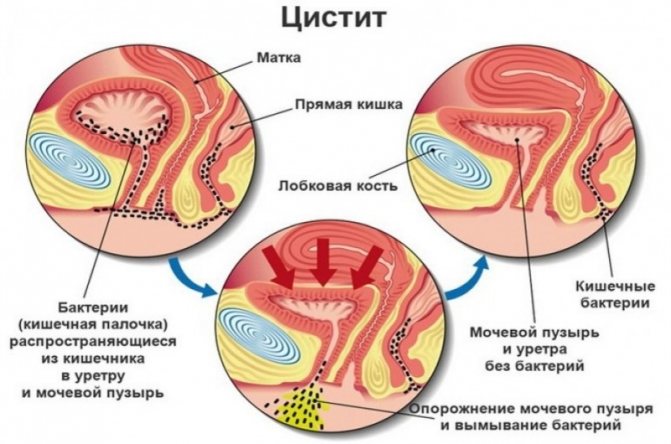
Additional signs of a dangerous condition:
- cramping character;
- increased symptoms in a horizontal position of the body;
- severe vomiting;
- shortness of breath at rest;
- frequent heartbeat, which in frequency goes above 100 beats per minute.
In the absence of medical attention, the fallopian tube ruptures. Internal bleeding begins.
Fetal size at 10 weeks of gestation
So, the 10th week of pregnancy has arrived: what happens to your baby?
- His little heart works at full capacity, producing up to 150 beats per minute.
- The bile ducts, rectum and intestines have almost completed their formation. The liver is actively forming.
- The diaphragm appears and the creation of the immune and lymphatic systems continues.
- Already, the fetal brain is incredibly active.
- At 10 weeks of pregnancy, a photo of the child clearly shows that the fetus has already formed legs and arms, fingers on them, an oral cavity and ears.
- The hormone testosterone begins to be produced in the testicles of future boys.
This week the baby's future baby teeth are laid. Mom needs to pay attention to her own diet and introduce more foods containing calcium into the menu.
At 10 weeks of pregnancy, a photo of the fetus gives clear characteristics of its parameters. The length is already 30-40 mm, and its weight is approximately 5 g. Visually now it looks transparent, without hair, but with fluff already developing.
The expectant mother must not only closely monitor her own health, but also take care during this period of sufficient iodine intake into the body, because right now its accumulation begins in the thyroid gland of the future baby.
